The Sennheiser GSP670 Wireless Gaming Headset Review: Cutting The Cord
by Andrei Frumusanu on July 5, 2019 8:00 AM EST- Posted in
- Gaming
- Headset
- Audio
- Sennheiser
- GSP670
Software & Functionality
Software functionality of the GSP670’s are quite straightforward if you’re running Windows 10; the headphones are simply plug & play both through the GSA70 adapter as well as if you directly connect the headphones via USB. However when you connect both, there’s some interesting side-effects:
Connected both ways, you get 4 audio devices in your sound settings. The GSP 670 entries are the USB connector entries, while the GSA 70 are the wireless dongle connections. However these do not work in parallel; you only have either pair of main and communications audio working, and playing back anything on the other pair will result in no effect.
In terms of details of what the “Communication Audio” is: this is essentially secondary sound channel muxed into the primary audio. However this again isn’t a second full blown audio device as playback is limited to a single mono channel at 16bit 48KHz, with the same characteristics on the microphone recording device.
Playing back audio through the main audio and the communication audio is possible, with the communication audio being overlaid on top of the main audio. The mux happens on the headphone audio SoC, and it’s possible it’s the main source of some further issues we’ll cover in the testing section.
Volume control of the communication audio is done by either the usual sound panel in the OS, or through the dedicated knob on the right side of the headphones. It’s to be noted that this secondary volume knob is relative to the primary volume control of the headphones, meaning that they’re not independent of each other and volume of the communication audio depends on both the secondary as well as primary volume knob controls.
In terms of Bluetooth connectivity, it’s a bit complicated as well. First of all, I didn’t manage to pair any BT device to the headphones while they were connected to the GSA70 dongle. Unplugging the dongle I finally managed to pair my phone.
When not in range of the GSA70 and connected via BT, the headset works as any other BT headset. This also means just one main playback device.
When connected to the GSA70, the BT connection is not able to play back anything and will only engage if you’re receiving a call on your phone. The most annoying aspect here and Sennheiser didn’t seem to think of, is that there’s no way to purposefully actually play back anything over BT if you’re still connected to the GSA70 and in range. Unplugging the dongle is the only way to actually do this.
While not strictly necessary, Sennheiser also offers the “Gaming Suite” application which gives you a few basic controls for the headphone audio as well as serving as an update application for the headphone’s firmware.
Amongst the more basic features, it offers a 5-band equalizer with a few pre-sets such as flat targets, a V-shaped music target and a competitive gaming target which dismisses most low-end frequencies for augmented treble.
The headphones also offer a 7.1 surround sound mimicking setting which gives one the impression of a wider sound stage and one can fine-tune the reverberation amount. I’m not too big of a fan of this and find it detrimental, but apparently some people like it.
The software also offers some basic microphone adjustment features, however I found some features currently not working. In general it seems like Sennheiser’s software suite is a bit incomplete – however it’s something the company openly admits and promises continued development in the coming months.
The biggest issue I found with the software suite is that it’s seeming incompatible with third-party APO plugins, which was a bit of a deal-breaker for me so I left it uninstalled during my general usage.


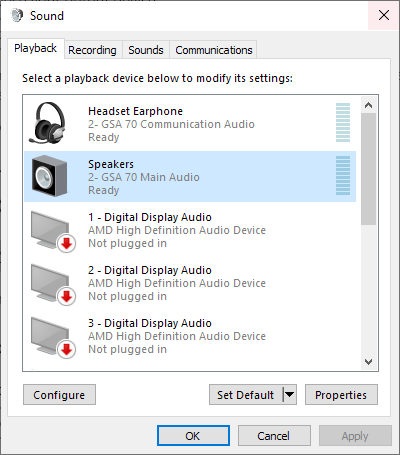
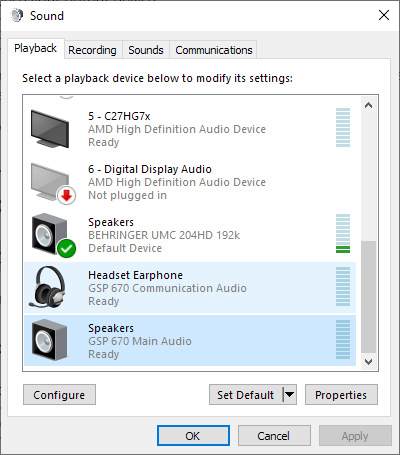

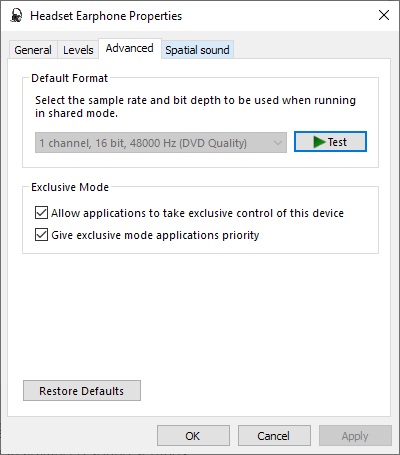
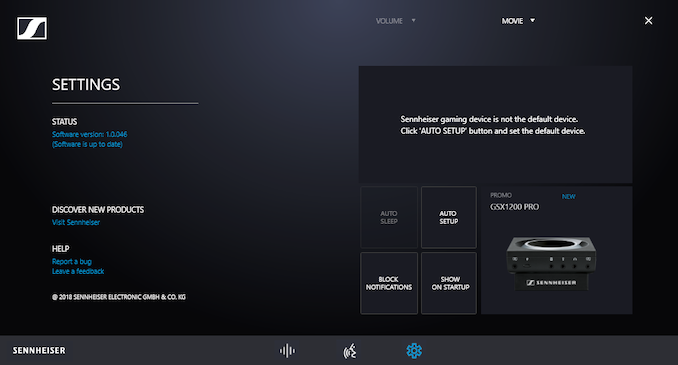
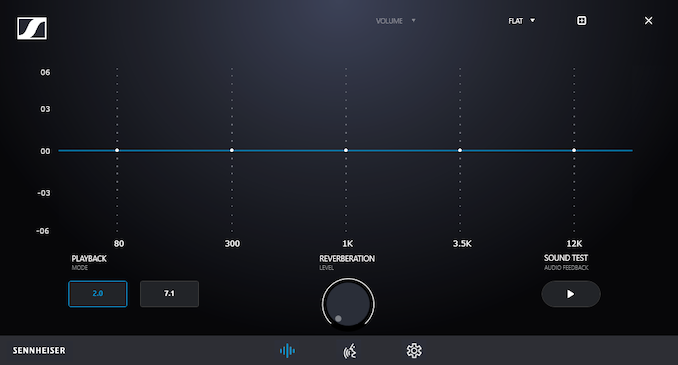
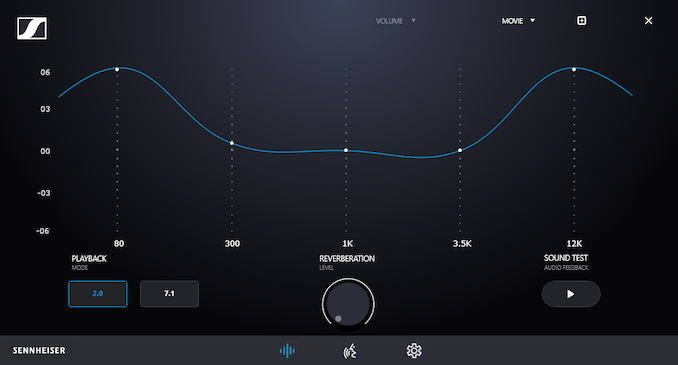
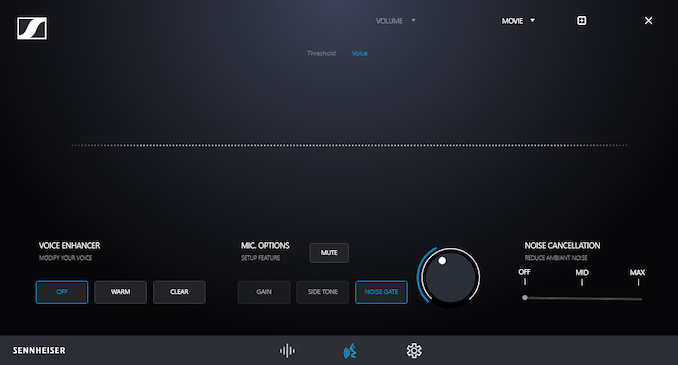








29 Comments
View All Comments
ZolaIII - Friday, July 5, 2019 - link
I am glad you came on board. Unfortunately neither this headphones nor especially awful AMP/DAC or bad BT RF WiFi modules deserve any attention & can not be recommended. While premium quality materials do deserve high grade that's about it when it comes to those headphones. Drivers aren't anything special & better ones can be found on much cheaper alternatives. The pads look good and quality built while still offering comfort & preventin sweating to much but then again their property clipping mechanism is a big minus. Amp DAC is a rather laughable as even cheaper Chinese DAP's come with better ones. The sound judging by your impressions is also nothing special including separation & the sound stage. While bas look like relatively easy to iron the difference between channels is a spoiler, mids are tad pushed back which is also a spoiler but it can be easily equlised the highs are bad & hard to equlise. In practice this means being tied to the per channel full band EQ (30 bands parametric) which is hastle. All in all pretty much disappointing from such a famous brand. Keep up the good work, finding good headphones especially in value for money category is a very hard thing.Andrei Frumusanu - Friday, July 5, 2019 - link
Right, I forgot to share the EQ targets:https://www.dropbox.com/sh/9adunymvqjbqwqs/AACeWpI...
Here are the impulse responses to be used for convolution, preferably via Equalizer APO.
The C1 target keeps a bit more of the warmth and bass of the default of the headphones while the D1 is a more flat target with wider soundstage.
ZolaIII - Friday, July 5, 2019 - link
Thanks for sharing.igavus - Friday, July 5, 2019 - link
This is an outstanding review. I really like how you followed up on the problems you found. I'm sure this will be of much interest to the team @ Sennheiser who developed & released this. I mean, they're probably not surprised, but I'm sure they didn't expect anyone to actually investigate the reasons for the poor performance. As usually audio review are just hand waving without much insight into what's wrong or concrete directions on how to improve.I just wish that they had engaged You or someone like you before releasing this dud to the public. Would have saved a lot of money and effort. As it stands, this headphone apart from the materials quality has nothing going for it. And the material quality is utterly wasted in this case.
Excellent journalism, wish there was a "give this man a beer" button somewhere, you definitely deserve it ;]
mooninite - Friday, July 5, 2019 - link
You have to be very careful about the Sennheiser products you look at. Some of them are very high quality stuff, while most of it seems to be generically engineered to be mass-produced with their label stuck on as a profit booster. Most of their low-level consumer fruit is nothing special yet it still costs hundreds of dollars while their professional grade products are sometimes a little cheaper.Oliseo - Friday, July 5, 2019 - link
Personally I find open backed headphones far superior for game playing. It actually provides an advantage in shooters as you can easily pinpoit directional sounds much more than a closed back set.Of course, this has the disadvantage of disturbing those around you.
But, if you don't have that problem, then always go with open backed headphones, especially for gaming, as they simply deliver a far superior sound stage.
BenSkywalker - Friday, July 5, 2019 - link
It's not just for gaming, closed headphones are just inferior in every way outside of isolating noise. Wireless are also flat out inferior, put them together and anything better than got garbage is actually noteworthy.Byte - Friday, July 5, 2019 - link
You just need to broaden your horizons. I recently was in Japan had had a chance to listen to a bunch of headphones from $200-$4000 and it was amazing. There is no inherently "better" technology. Just which fits your tastes. In that regard, wireless is just trash, and so are "gaming" headphones.Sivar - Monday, July 15, 2019 - link
Wireless is not necessarily trash. Sennheiser developed lossless wireless tech for their wireless HD650, though I doubt it is used in these gaming headphones.Lossy wireless isn't even necessarily bad. No human can reliably tell the difference between a properly encoded lossy audio file (AAC, Vorbis, etc.). True, headphones do not directly transmit such file formats, but in principle excellent fidelity is possible.
Bluetooth in general is not great for audio quality, but with aptX it has at least the potential for good listening, though I have not heard any supporting devices myself.
Andrei Frumusanu - Friday, July 5, 2019 - link
There's really nothing preventing closed headphones of having good imaging and wide sound stage.